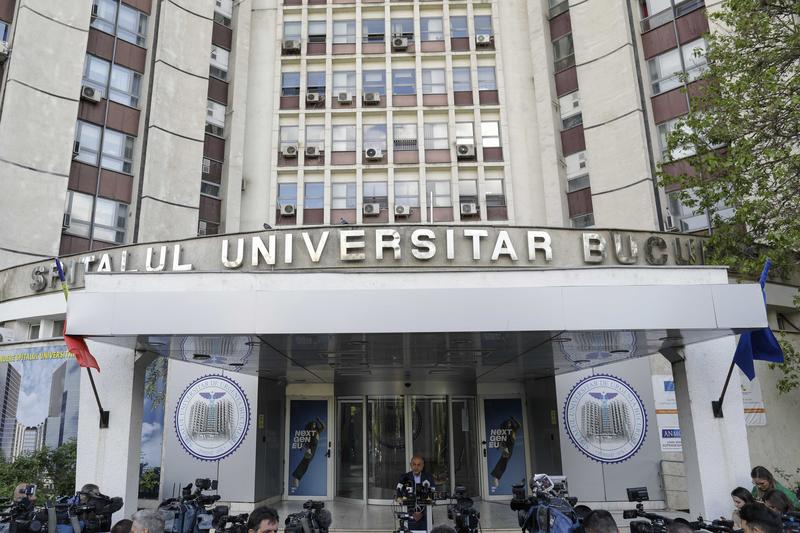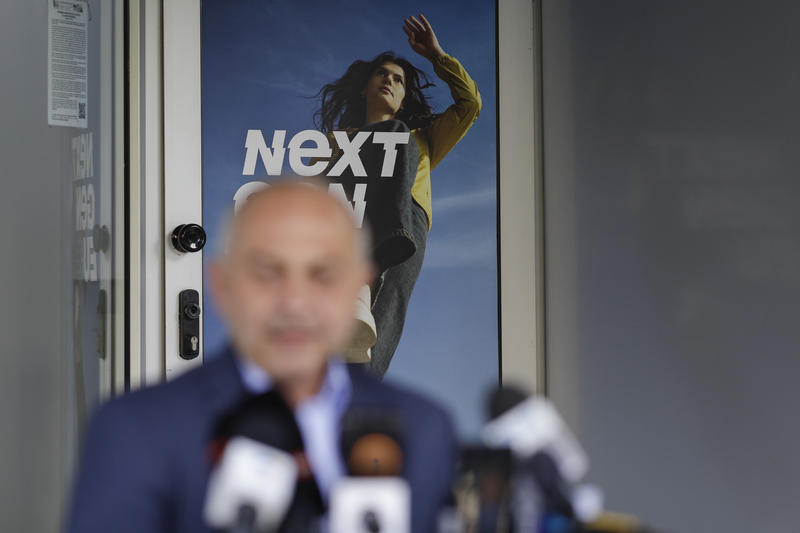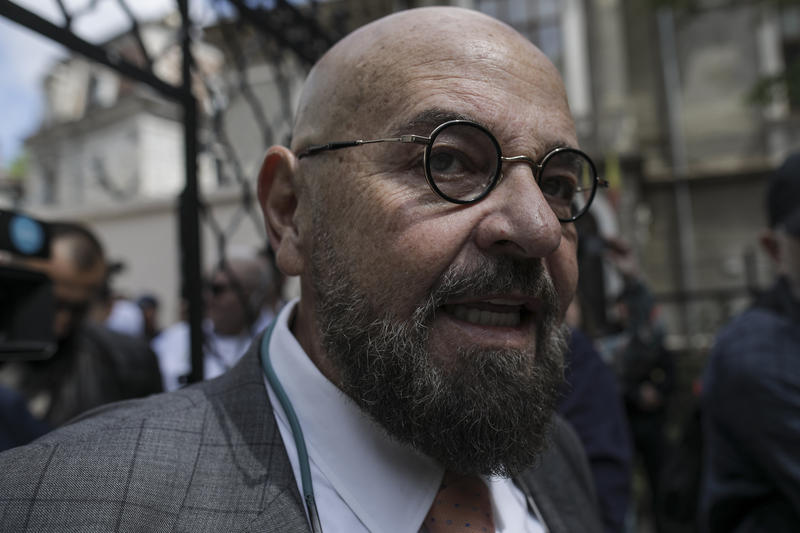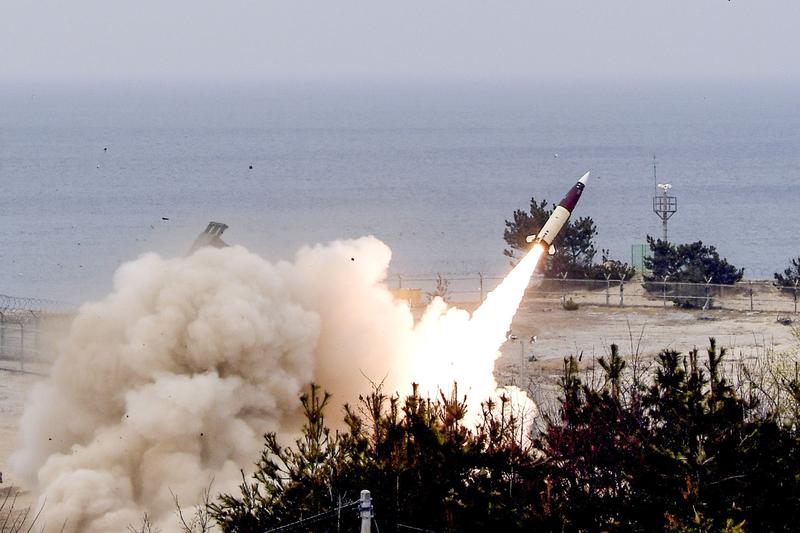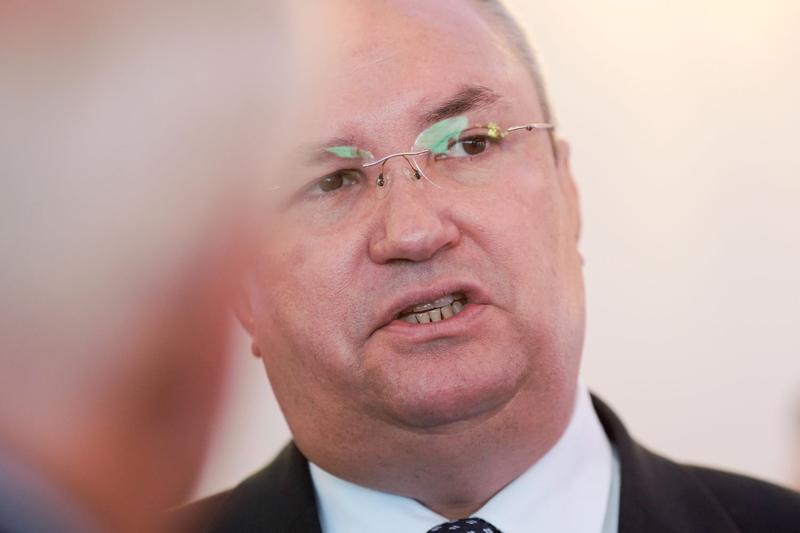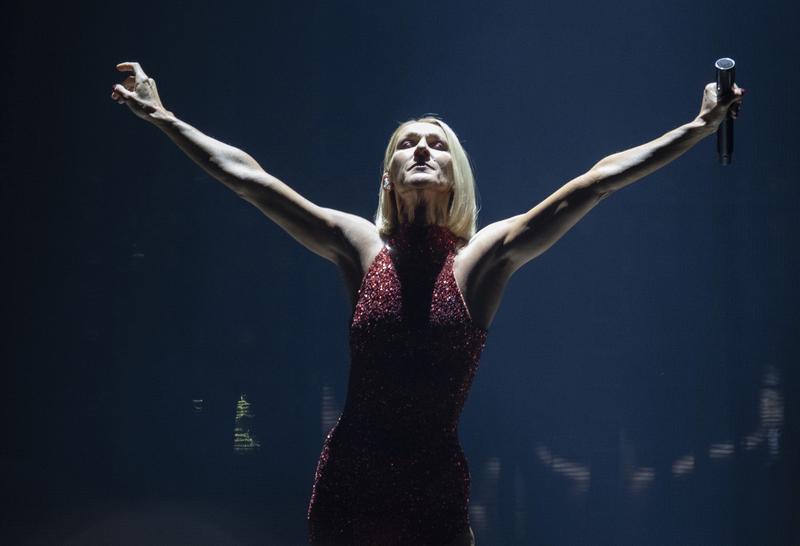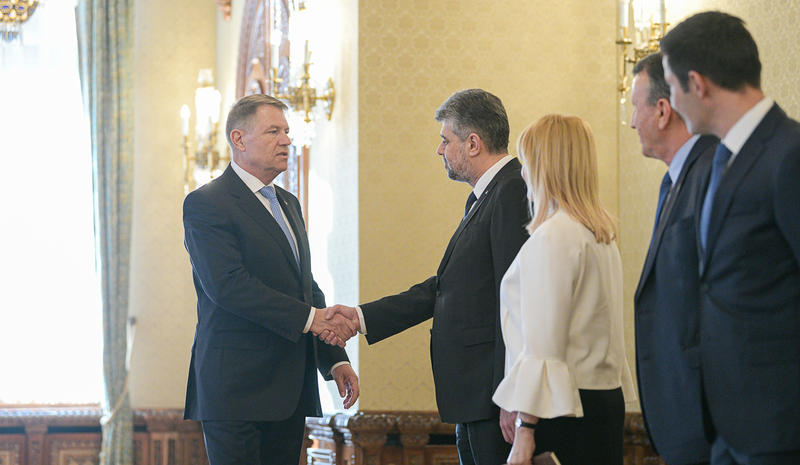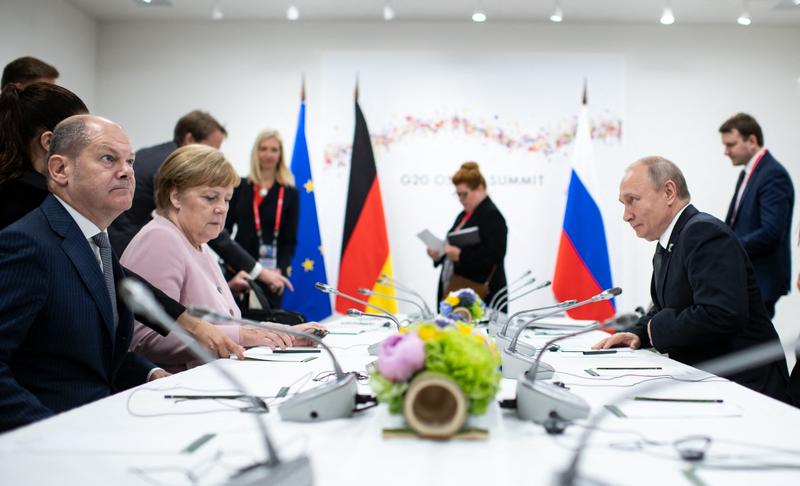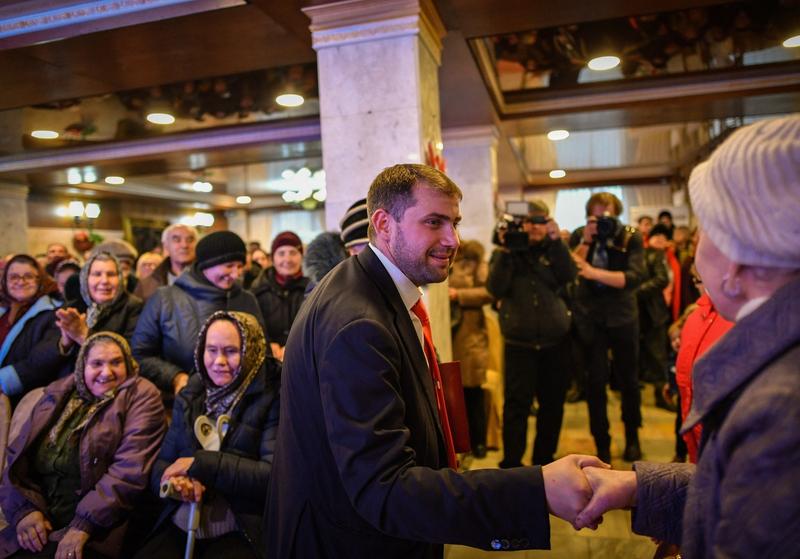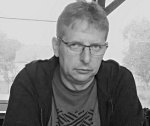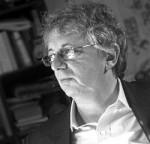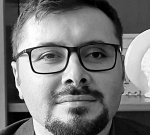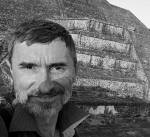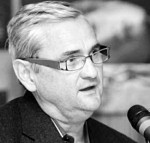The situation of the people suffering from acute leukemia in Romania is dramatic. The medicines are not enough, hospital conditions are disastrous. The main issues are the lack of money and improper resource management. Therefore, leukemia patients in Romania have fewer chances to survive and to recover than the ones in Western Europe, for instance.
However there are Romanian doctors trying to change this tragic situation. One of them is MD Andreea Moicean, in the Fundeni University Institute, Center of Hematology and Bone Marrow Transplantation, the most important institute of this type in Romania.
[c:1:s]What is the current situation of the leukemia patients in Romania?
Andreea Moicean: Leukemia patients are divided in two categories: the ones suffering from chronic leukemia and the ones with acute leukemia. For the patients in the first category efficient and very expensive drugs, recently discovered, are also available in Romania. (e.g. Glivec for chronic granulocyte leukemia).
I must mention though that the access to these medicines is somehow restricted, for Romanian patients. Mainly this access depends on a commission of the National House for Health Insurance that monthly approves the start and also the continuation of the treatment. This commission gives the green light within the limits of the approved and inflexible funds. Those commissions exist in the Western countries, too.
Apart from that, in Romania, modern and efficient treatments for chronic leukemia are not at discretion but they are accessible.
The most important issue in Romania is the situation of acute leukemia patients.
In the field of acute leukemia, as it was emphasized at the latest Congress of European Group for Blood and Marrow Transplantation (EBMT), which took place between 24 and 28 March, 2007, at Lyon, France, no new medicines have been released in the last decades.
What has been brought as novelty in treating acute leukemia, recently, was the treatment strategy and particularly: the administration of new combinations of the well-known cytostatics and, most important, the use of large and very large doses of these drugs.
Sadly, in Romania, acute leukemia patients rarely benefit from proper treatment and looking after.
An actual situation, from the statistical point of view, is difficult to be produced by any of competent officials (from the Ministry of public Health, from the Romanian Society of Hematology, from the National House for Health Insurance).
And the reason is the complete lack of accurate and complete statistics - at any level (either locally at the level of sanitary units, or centrally at the level of the above mentioned institutions) -, regarding the number of people suffering from hematological malign diseases, including acute leukemia.
To put it simple: we do not know the number of people suffering of acute leukemia in Romania, either general or by leukemia categories. This is an example of improper management and lack of communication.
In the Center for Hematology and Medullary Transplant of Fundeni Clinical Institute, which is the largest unit treating hematology patients in the country and the oldest (with a total of 157 beds, it is a mammoth unit compared to any of the ones existing in the Western countries!!!), we have registered, between 1979- 2005, only the adult patients with acute lymphoblast leukemia - 802
- and the one diagnosed with acute myeloblast leukemia - 1827. Talking strictly about years 2004 and 2005, we have come up with an average of 40 patients per year with acute lymphoblast leukemia and 50 patients per year with acute myeloblast leukemia.
What about the treatments? Are they the same as abroad? Do the Romanian leukemia patients have the same chances of recovering?
A. M.: Unfortunately, and I regret to say that, to the question whether acute leukemia is treated in the same way here like abroad, my answer is yes and no. To the second question I can definitely answer NO, the Romanian people suffering from acute leukemia DO NOT have the same chances of healing.
The reasons can be grouped in two main categories:
The first one refers to the medicines: cytostatics, antibiotics, antiviral, antifungal, growth factors, and cortisones, all essential and indispensable for the treatment of acute leukemia. The quantities are insufficient and frequently they are not provided in due time.
A doctor, treating averagely 12 hematological patients of all kinds, is given “a portion” of cytostatics, antibiotics, which will - at most -provide the proper treatment for only one acute leukemia patient.
But what if there are 2? What about the other patients? They may need the same medicine, except in smaller quantities! There are terrible situations when, for instance, a patient comes in on, let’s say, April 2nd and he cannot have a proper and complete treatment, not until after the 15th of the month, when the medicine provisions for this month arrive.
This may lead to loosing the remission, altering of the treatment protocol with a definite impact on the recovering chances. The money spent are the same only the efficiency is lower. Improper management.
The second category refers to the hospital conditions: hygiene, isolation, diet, quality of air and water. In Romania, all these are much below the ones imposed by efficient treatment of acute leukemia patients. There exist no written European standards in the sanitary field, but there are some requirements imposed by the level of care.
You cannot look after an acute leukemia patient in the same conditions as a chronic leukemia patient, because you might kill him. You cannot hospitalize in the same place an acute leukemia patient with a patient having lymphoma.
The first one may develop life risking complications, while the second may very well receive the correct treatment in ambulatory conditions, too (option often chosen in Western Europe).
We must understand one thing: the acute leukemia patient is not an ordinary hematological patient. He is one of the most complicated and demanding patients of known by medical science. The basis of acute leukemia treatment has radically changed during the last decade.
It consists now of administration, after inducing the remission, of high and very high doses of cytostatics within a short period of time.
Administering small and repeated doses, to acute leukemia patients, over a period of 2.5 - 3 years, treatment popular in the 70s - 80s, is now obsolete.
These large doses that represent the basis of the modern treatment for acute leukemia are meant to diminish, ideally to eradicate, the residual disease which represents the source of relapse and the cause for late death in acute leukemia.
During and after these very aggressive treatments, the acute leukemia patient is extremely vulnerable to infections of all kind: bacterial, viral, fungic - infections that represent the precocious cause of death in acute leukemia.
These infections have both internal origins, meaning that they originate within the natural cavities of the human body (bowel, alimentary canal, pharynx, and upper breathing apparatus), and contamination from the environment: air, water, food.
Therefore an acute leukemia patient must be hospitalized from the very beginning in an extremely clean environment, even “sterile”, similar to the one required by transplantation: filtered air, filtered water, sterile food, in a room with its own bathroom/ toilet for one, maximum two patients, not more.
There are also some other issues related to visitors and to overworked medical staff. We have the same situation in the whole country. Anywhere in Romania, there are no conditions for a proper looking after leukemia patients.
The hospitals are poorly equipped, the hygiene conditions are way below the international standards and all these are making patients’ life much more difficult. Is this mainly because of money shortage? What about the management?
A.M.: This situation is due to the lack of money. However, part of these issues could be solved by a better management.
There are lots of examples of possible improvements such as: instead of having 4 or 8 patients with all types of hematological diseases (acute leukemia mixed with chronic leukemia, lymphomas, anemia, and hemorrhagic syndromes) hospitalized in the same room, a good management would have rooms with only 1-2 beds with its own bathroom/ toilet exclusively for caring the acute leukemia patients,
while the others can be hospitalized in rooms with more beds with common bathroom/ toilet or in clinic because they don’t have such severe diseases.
This separation would be beneficial from all points of view: the treatment would develop without complications or with fewer complications, for the patient, less expenditures, better results in terms of surviving and quality of life, and even better healing chances.
Back in the ‘90s, when I visited for the first time a hematology unit in Western Europe, in France, they were saying that treating acute leukemia was much more expensive compared to curing lymphomas and chronic leukemia.
Today, by rationalizing the consume because of hospitalization conditions for the acute leukemia patient on one hand, and because of introducing expensive medicines in the practice of lymphomas and chronic leukemia treatments on the other hand, we cannot talk with the same certitude about expensive and cheap diseases.
This is just an issue of management and of understanding the treatment programs on medium and long term.
To draw a conclusion, in Romania we desperately need to build adequate hospital units dedicated strictly to the care of acute leukemia patients, with trained personnel for dealing with these very fragile patients and with permanent supplies of the necessary medicines.
How has the Fundeni Center for Hematology and Medullary Transplant evolved? How many people have been successfully treated?
A. M.: From the point of view of performed procedures, the Fundeni Center for Hematology and Medullary Transplantation has beautifully evolved.
I am not very good in higher mathematics, but I think it was an exponential evolution: in the first year 2001 - 1 transplantation, in 2002 - 2 transplantations, in 2003 - 3 transplantations, in 2004 - 7 transplantations, in 2005 - 15 - and in 2006 - 27. This year we had 14 procedures in the first 3 months.
The twinning program with the University from Regensburg, lead by Prof. Holler and financed by the German subsidiary of Jose Carreras Foundation, had a big contribution to this progress.
I cannot go further without stating my personnel content and pride that we have changed the white spot that represented Romania until 5-6 years ago in the field of medullary transplantation into a very light green area (at EBMT, the number of transplantations performed per 10 000 is expressed in green shades. Countries as Germany, France and Italy are always represented with dark green.
Hungary for example is represented with a lighter green and Romania, now, with very light green.)
That white spot haunted me, Prof. Colita and the colleagues from Targu Mures and Timisoara for years. We were the ones who implemented during 1996 - 2000 in Romania, the Medullary Transplantation Program and the ones who performed the first transplantations of hematopoietic stem cells in Romania during 2001 - 2002.
But we have another problem with the medullary transplantation at Fundeni and that is the efficiency of these procedures: how many patients were cured, how many patients lived longer after transplantation and how many people have died in the first year after the procedure. Here the things get more complicated.
We had very good results for the chronic malign diseases, but these cases do have a better chance for survival without transplantation, too.
For acute leukemia patients the situation cannot be described in the same terms. Starting with 2002 until present, only 14 patients in Fundeni had access to transplantation (out of a total of 69 patients undergoing transplantations there, so a percentage of approx. 20%): 3 autotransplantations and 11 allotransplantations.
Out of these 2 patients with autotransplantation have died in the first year after the procedure, and the third is in his 5th week from the procedure. Out of the 11 allotransplantations, only 3 are still living (after 33 months, 18 months and 9 months from the procedure). Two of them have a poor physical condition. The transplantation in acute leukemia is a very difficult one. (Note: all data are as of April 1st, 2007)
I think these numbers state very clearly that in Romania acute leukemia cases are not well “managed”. Access to proper treatments (high “healing” doses of cytostatics) is very limited just like the one to the transplantation procedure…
The patients with less serious diseases are preferred for transplantation because the procedure is easier to manage.
So what about acute leukemia patients? Facts is that, considering the Fundeni transplantation unit and of the other much smaller units existing in the country are overcrowded, there is a natural tendency to solve the easier cases, which have lower death risk in the first year after transplantation like lymphomas and myeloma.
We talk about organization, we talk about money, we talk about experience, and we talk about self-pride (we have to report only successes, haven’t we!?). And yet, what do we do with acute leukemia patients for whom the treatment requires special conditions and following the protocols without any compromise!?!?
What are the relationships between the Romanian hematology doctors and their colleagues from abroad who benefit from a better experience and a better endowment?
A. M.: They are very complicated! There is a lot to say! The relationships between us and our colleagues from abroad are mostly friendly. Beyond that we can also talk about some partnerships, when the European partner was financially interested.
The European developed centers are drawn into these partnerships by the Programs financed by EU or European Foundations. These centers receive important funds for helping, supporting and developing units in Eastern Europe, EU accession candidates or newly EU accessed countries.
That is how we formed a partnership between Fundeni center and the University of Regensburg, and between the Targu Mures transplantation center and a center from Barcelona.
The foreign partners have always appreciated the skills and knowledge of the Romanian personnel, particularly of the doctors, but also of the nurses in some cases.
However there were some things that in many cases “spoiled the relationships” and those things were: bureaucracy (several times I’ve heard from the foreign partner: “I’ve had enough waiting for a signature!”), the attitude and the way of thinking typical for the old communist regime structures, regarding decision making positions for instance.
Suffice it to say that the main issue here would be a distinct tendency of creating false obstacles, of putting one’s personal interest above all - (2 months ago in Heidelberg, the German representative of Carreras Foundation told me: “As long as you keep the old structures and the old decision makers, you will accomplish nothing in Romania.
We are putting an end to any partnership approach!”) - of manifesting their ego in all the wrong situations and of sacrificing the team reputation and the patients’ interest to the self gain.
It is very painful to witness something like that, especially after years spent in thoroughly constructing a positive reputation and a proper image. Someone simply comes and spoils everything, only because of self-pride and because he can’t take all the credit for the good results and he has to share that with someone younger.
Talking about expertise, how does a Romanian doctor acquire the necessary qualifications for treating such blood diseases?
A. M.: The education of a Romanian doctor, wanting to specialize in treating blood diseases, is complicated and difficult to complete, inside a system frozen by inefficiency. In Medical School, for instance, courses are not aimed to teach the student how to logically evaluate a medical case, but seem mainly meant to challenge the student’s capacity to memorize.
The practical training stages are absolutely useless in building the necessary skills. There it’s all about the medical students’ ability to pretend being busy and to fool the supervisor.
Many times I was forced to check the attendance, in order to compel the students to participate in the practical training or to take the student by the hand and get him/her to the patients’ bed, to make him/her talk to the patient or to clinically examine the patient. These are very painful situations for a teacher.
Therefore my conclusion is that, at least for now, university education only encourages and cultivates the lack of interest.
Training during the residency stage is good only from the perspective of accustoming the young doctor with work beside patient’s bed. Alas it doesn’t develop at all the doctor’s curiosity for scientific research. There are no real case-debates inside the university and hospital departments, or in the clinic, there is also no researching unit.
I debate a lot with my residents, we confront each other, we argue, but inside the clinic, hospital or university, there are no discussion at all, opinions are not allowed. Each doctor works on his lot of 8 - 10 beds.
As far as I know, training during residency in the European Union consists of both clinical and laboratory research stages. This mixture of patient observation and laboratory experiments allows a deeper understanding of the disease’s mechanisms and of the different treatment effects.
In Romania, the bio-units have disappeared long time ago (there are no longer laboratory animals allocated to clinical units).
Moreover, the hematology syllabus was until very recently completely obsolete, a version of the ‘90s This, I hope, will be soon changed as the doctors’ Post- graduation Education Center has adopted the EU syllabus, at least the one concerning the theoretic education.
Speaking of education, I think that an extremely important thing is the continuous training of senior doctors, regarding recent discoveries and modern treatment for blood diseases. There are Romanian colleagues that still apply treatments used during the ‘80s, especially in acute leukemia cases. We cannot blame them, though, but a deficient communication and information system.
At Fundeni, the contacts we have, the personal correspondence with European experts for some special patients, the Teleconferences we attend twice a week with the University of Regensburg and professor Holler (which are extremely helpful, but unfortunately there are only 7-8 participants from the Romanian side), allow us to be in permanent contact with the novelties.
Unfortunately, everything stops here. The patient, we diagnose at Fundeni, in Bucharest, leaves for his little town or village, to the county doctor - hematologist, oncologist or internal medicine specialist - with very precise prescriptions, but the doctor there doesn’t understand a thing.
Most frequently he applies the received prescriptions without understanding them, which is extremely dangerous. Because he doesn’t understand, he cannot properly evaluate the results, the adverse effects, he doesn’t recognize the complications. Or he does not follow prescriptions and changes the treatment to a familiar one.
Therefore my greatest wish at this moment is to establish an Acute Leukemia Network to facilitate the information exchange, the education of all doctors regarding new acute leukemia treatments, training of the attending personnel in looking after the acute leukemia patient, the achievement of the National Register of Acute Leukemia.To this purpose I have had in Lyon several meetings with French, Italian, English and German professors who promised to support us.
But of course we need money, a lot of goodwill from the Romanian authorities and we need time. As a first step, one year ago I initiated the establishment of the Romanian Working Group for the Study of Acute Leukemia. This group is really “Romanian” because it includes not only Fundeni or Bucharest specialists, but from the entire country.
Still it is not really a “working group” because we haven’t managed to meet for working because we don’t have money for that. We need money and goodwill.
An interview by Ovidiu Suciu - June 2007
